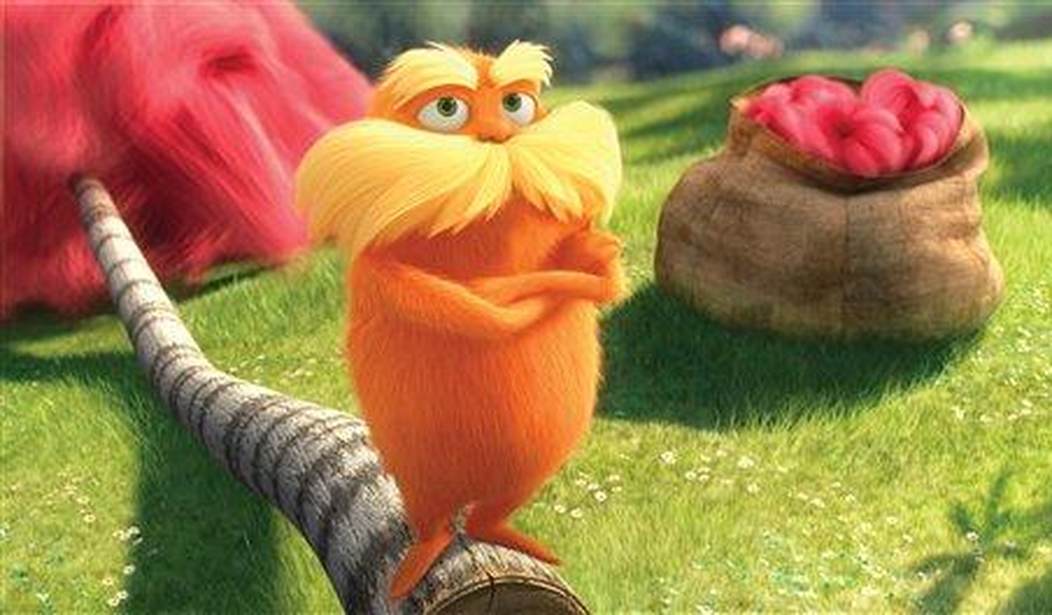The latest front in the culture war focuses on—wait for it—children’s cartoons, in the form of animated shows and movies and illustrated story books. Several Dr. Seuss titles, along with Disney movies like Peter Pan and The Artistocats and Loony Tunes characters Pepe LePew and Speedy Gonzalez, have all been essentially canceled by the woke mob.
Unfortunately, though unsurprisingly, in their insatiable appetite for new phantom offenses, the wokesters have completely missed the point. Of course those cartoons traffic in stereotypes. They’re cartoons, another word for which is caricatures.
More importantly, though, the fact that they might contain some mildly inappropriate material is not a bug but a feature. That’s the purpose of what we used to call “the comics”—funny stories featuring broadly drawn, cartoonish characters in preposterous situations. Essentially, they’re morality tales, helping children understand, in an engaging fashion, what is and isn’t acceptable in society.
It has ever been so, dating back long before modern moving pictures or today’s colorful, high-tech animation. Consider the Winnebago Trickster Cycle, a series of ancient Native American oral tales (since transcribed) about a shady, mischievous yet comical—dare we say cartoonish?—character known as Trickster. A shape-shifter, Trickster appears at times as an animal, other times as human; sometimes male, sometimes female. According to one story, Trickster carries his (her? its?) genitals around in a box, all the easier to morph quickly into whatever the plot requires. Trickster’s role, of course, is to fool people; but more than that, he (for Trickster is primarily a he) exhibits the kinds of antisocial behaviors that were dangerous or forbidden in Winnebago culture.
Recommended
For example, in another story, Trickster eats a plant he had been warned not to eat. Soon, he begins to defecate—and defecate, and defecate. The pile of you-know-what eventually becomes so large that Trickster must climb a tree to escape it, and even then it continues to grow, all the way up to the lowest branches. Imagine generations of Winnebago children, sitting around the campfire in rapt attention as skilled story-tellers wove the sordid yet hilarious tale and squealing with delight at Trickster’s grotesque predicament.
But beyond the fact that it’s undeniably funny (even for adults), there is an obvious point to the narrative: Don’t eat things your elders tell you not to eat. In the story, the results of disobedience are absurd and therefore comical. In real life, they could be disastrous, even deadly. But it’s the humorous depiction, specifically the “inappropriate content,” that drives that important message home and makes the lessons stick—lesson that ultimately underscore what’s acceptable in an organized society.
The Trickster character is hardly unique to Native American culture. In fact, he has appeared in many guises, throughout history, all the world over. Brer Rabbit, in the Uncle Remus tales from the Gullah culture in South Georgia, is based on an African version of Trickster. In Norse mythology, the trickster is named Loki—long before he was glamorized for Hollywood by the movie industry.
In modern America, we have our own versions of Trickster. Here, he goes by names like Bugs Bunny, Pepe Le Pew, and The Cat in the Hat. Yet, in whatever form, he serves the same purpose: to make us laugh—specifically, to make children laugh—while at the same time illustrating behavior that, although indisputably funny, is also obviously, wildly inappropriate. That, as our Winnebago, Norse, and African forebearers understood so well, is one of the primary ways children learn: not just through moralistic portrayals of good behavior but through comical depictions of bad.
Thus, it never occurred to me, as a little boy watching Pepe Le Pew cartoons on Saturday morning, to find his behavior acceptable, much less imitate it. Viewing his overly-amorous antics in light of what my parents had taught me about male-female relationships—and therein, perhaps, lies the key—I understood just the opposite: It was clear that Pepe was a cad, that no man should treat women that way, and that any man who did was—what else?—a skunk. That was the message I received because it was the message intended by the storytellers.
Like those who came before us, we used to understand such things. That we no longer do--that sour, humorless wokesters are attempting to banish the lovable, deplorable, ridiculous rogue, Trickster—bodes ill for our society.

























Join the conversation as a VIP Member